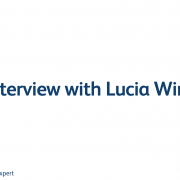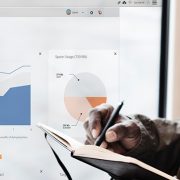The Salvatore Ferragamo S.p.A., a renowned Italian enterprise specializing in luxury merchandise, boasts a rich and illustrious past marked by a phase of organizational and marketing reforms aimed at maintaining competitiveness within a challenging industry. Ferragamo, as a brand that has successfully navigated through economic downturns, evolving market trends, and internal obstacles, offers valuable insights into the realm of risk management.
- The process of adjusting to evolving consumer preferences: Lesson: The organization has been compelled to adjust its strategies in response to evolving consumer preferences and inclinations, particularly with regard to a growing desire for informal footwear and a decline in demand for formal attire. The implementation of risk management strategies involves conducting ongoing research and analysis of the market in order to proactively identify potential changes and subsequently adjust the product line to align with market demands.
- Brand Positioning and Legacy: – Insight: Ferragamo adeptly manages the interplay between capitalizing on its extensive legacy and staying current in the contemporary fashion industry. The Risk Management Application aims to safeguard the historical legacy of your business while fostering innovation and discouraging complacency based on past achievements. Maintaining consistency in brand values and historical context can serve as an effective strategy for minimizing the potential loss of loyal customers during the process of rebranding.
- Risks in the Global Market: – Insight: The brand’s significant dependence on places such as China for the sale of luxury products renders it vulnerable to geopolitical and economic fluctuations in these regions. The implementation of a risk management application involves the strategic diversification of markets as a means to limit potential risks arising from regional instabilities. It is imperative to get a comprehensive understanding of the political and economic landscapes pertaining to the primary markets of interest. In doing so, it becomes possible to build contingency plans that can effectively address potential challenges and uncertainties.
- Supply Chain Management: – Lesson: Luxury firms face a heightened susceptibility to supply chain disruptions due to their reliance on specialized materials and craftsmanship. The objective of this risk management application is to establish a resilient supply chain by using alternative sourcing strategies for materials and manufacturing processes. This approach aims to mitigate the adverse effects of potential interruptions.
- The Dilemma of Innovation versus Tradition: – Insight: Ferragamo has faced the challenge of effectively handling the potential drawbacks of innovation, by carefully considering the impact of new product lines and marketing methods on their current consumer base. The user’s text does not provide any information to be rewritten in an academic manner. The application of risk management: It is imperative to thoroughly evaluate and scrutinize test ideas, ensuring their congruence with the identity and values of your business. The dilution of a brand’s core should not be a consequence of pursuing innovation.
- Financial Risk Management: – Insight: Luxury brands frequently encounter the obstacle of elevated operational expenditures. Ferragamo has had to effectively navigate financial risks in order to sustain profitability. The user’s text is already academic in nature. The application of risk management: It is imperative to diligently monitor the inflow and outflow of funds, while simultaneously ensuring a prudent equilibrium between allocating resources towards expansion and effectively controlling expenditures. The implementation of cost control measures and the adoption of smart financial planning strategies can effectively facilitate the management of financial uncertainty.
- Digital Transformation: – Insight: In response to the proliferation of electronic commerce, Ferragamo has undergone a process of adopting and integrating online sales channels. The Implementation of Risk Management Application: Embracing digital transformation to effectively cater to customers’ preferences and needs. The reluctance to embrace emerging technology can pose a substantial risk within the contemporary market landscape.
- Counterfeiting and Intellectual Property: – Lesson: Ferragamo, being a luxury brand, is exposed to the potential threat of counterfeit merchandise, which has the capacity to negatively impact the company’s reputation and financial performance. The user’s text does not provide any information to rewrite in an academic manner. The proposed risk management strategy involves allocating resources toward the implementation of anti-counterfeiting technologies and legal safeguards to protect intellectual property. The purpose of this communication is to provide customers with knowledge regarding the significance of authenticity.
- Sustainability and Social Responsibility: – Insight: There is a growing consciousness among consumers regarding the ecological and societal consequences associated with the things they choose to acquire. Ferragamo has been actively engaged in augmenting its sustainability initiatives. The incorporation of sustainable practices and social responsibility into core business strategy is essential for effectively managing risk. By doing so, organizations can limit reputational risk and ensure compliance with developing legislation.
- Leadership and Succession Planning: – Insight: The process of transitioning leadership can pose significant risks for brands, particularly in the context of family-operated enterprises such as Ferragamo.The application of risk management. It is imperative for organizations to establish well-defined succession plans and implement leadership development programs in order to maintain continuity and uphold the confidence of stakeholders.
By conducting careful observations and drawing insights from renowned brands such as Ferragamo, enterprises across diverse industries may effectively implement these valuable lessons into their own risk management strategies. This proactive approach will enable them to maintain their resilience and competitiveness in the midst of multifaceted challenges.














